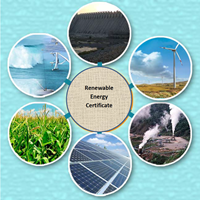
Delhi's electricity regulator has said the government cannot interfere in fixing tariff though it can subsidise consumers, highlighting the potential difficulties facing Arvind Kejriwal, the new Delhi CM, whose party has promised to halve electricity prices in the Capital.
"The government cannot interfere in tariff fixation. It is a regulatory issue," PD Sudhakar, chairman, Delhi Electricity Regulatory Commission, told ET.
"We fix the tariff as per law, taking into account all economic considerations. The government cannot interfere in the process. But if it wants to support people, it can offer a subsidy to reduce power tariff," he said.
"How do they (Aam Aadmi Party) propose to reduce the tariff? We fix the tariff after due diligence and it is difficult to reduce tariff beyond a point as 70% of Delhi's power comes from outside and we have no control over the cost of power," the state power watchdog said.
"But by law, the state government can offer subsidy. To what extent they would want to subsidise is up to them," Sudhakar said.
The meteoric rise of AAP, which eventually led to Kejriwal becoming the chief minister of Delhi, was fuelled, at least in part, by promises which many economists would term populist.
These include providing 700 litres of free water, the promise to cut electricity rates in the city and conducting audit of power distribution companies (discoms). While many Delhi residents were enthused by the prospects of cheaper power, the power distribution companies have said it will be "nearly impossible" to lower the rates, given that their accumulated losses amount to Rs 11,000 crore.
Discoms argue that in the past 10 years, cost of power has increased 300%, mainly because of higher coal prices and a rise in the financing charges due to higher interest rates, while the rate at which it is sold to retail consumers has increased by only 70% during the period.
Delhi has three power discoms, two controlled by Reliance Infrastructure and one by Tata Power. The state government owns a 49% stake in each discom.
"If they (AAP) feel the accounts are fraudulent and have been under-reported by 50%, it's a matter of their perception. Now they have formed the government, which is a part owner of the discoms. We have done our job carefully, but if they want they can get auditors and fix any issue they may come across," Sudhakar said. The total annual revenue of the three discoms in Delhi is around Rs 15,000 crore. If the government offers to lower tariff by 50%, it may result in an additional annual burden of Rs 7,500 crore on the state, experts tracking the sector said.
Sudhakar also dismissed arguments that the state's discoms were making profits on surplus power available to them. "Delhi has 20-30% surplus power during nonpeak hours, which is fed back into the grid at rates fixed by the Central Electricity Regulatory Commission. Due to change in norms, the returns the state gets are low and we are actually making losses on it." Industry sources said during the 2010 Commonwealth Games, the Delhi government had asked discoms to tie up additional power to meet the spike in demand.
Post the event, the city has had surplus power which it can feed back into the grid at rates fixed by CERC or sell on the power exchanges or through bilateral pacts. However, most state power distribution companies choose load shedding over buying power as they are sitting on huge losses. Consequently, there are not too many takers for the surplus power from Delhi and the city state ends up selling it back to the national transmission grid.
Long before his election campaign, Kejriwal had alleged the Sheila Dikshit-helmed government was in cahoots with the discoms, which resulted in wrongful gains to the latter. He had cited a 2010 estimate by Brijnder Singh, the chairman of DERC at the time. Singh had said that discoms were making large profits and had recommended reducing rates by 23%.
According to Singh, discoms would have made profits of Rs 3,577 crore from sale of surplus energy, but his recommendation was rejected and was not incorporated in the final tariff order.
This issue was contested by social worker and former MLA Nand Kishore Garg through a public interest litigation in the Delhi High Court, to which AAP leader Prashant Bhushan was also a party. But the court ruled that Singh's recommendation was not the official tariff order.
In its judgement in May 2011, the Delhi High Court said, "The notings on the files by the commission do not constitute an 'order' under the 2003 Act...The commission shall proceed afresh by following the due procedure and do the needful and not afford any kind of opportunity for criticism and determine the tariff."
Sudhakar said the court order had settled the issue: "This argument (citing Singh's order) keeps resurfacing, but the Delhi High Court has already dismissed this since there was no official DERC order on it. The so-called profit that was mentioned was based on certain assumption that did not come true."
Officials at the regulator said during Singh's tenure, he had expected that Delhi would get an additional 5,000 mw capacity in 2010-11 which could be sold at a premium to make profits. However, these projects were either delayed or shelved. The state, thus, never got this capacity and therefore there were no profits.
Source
































